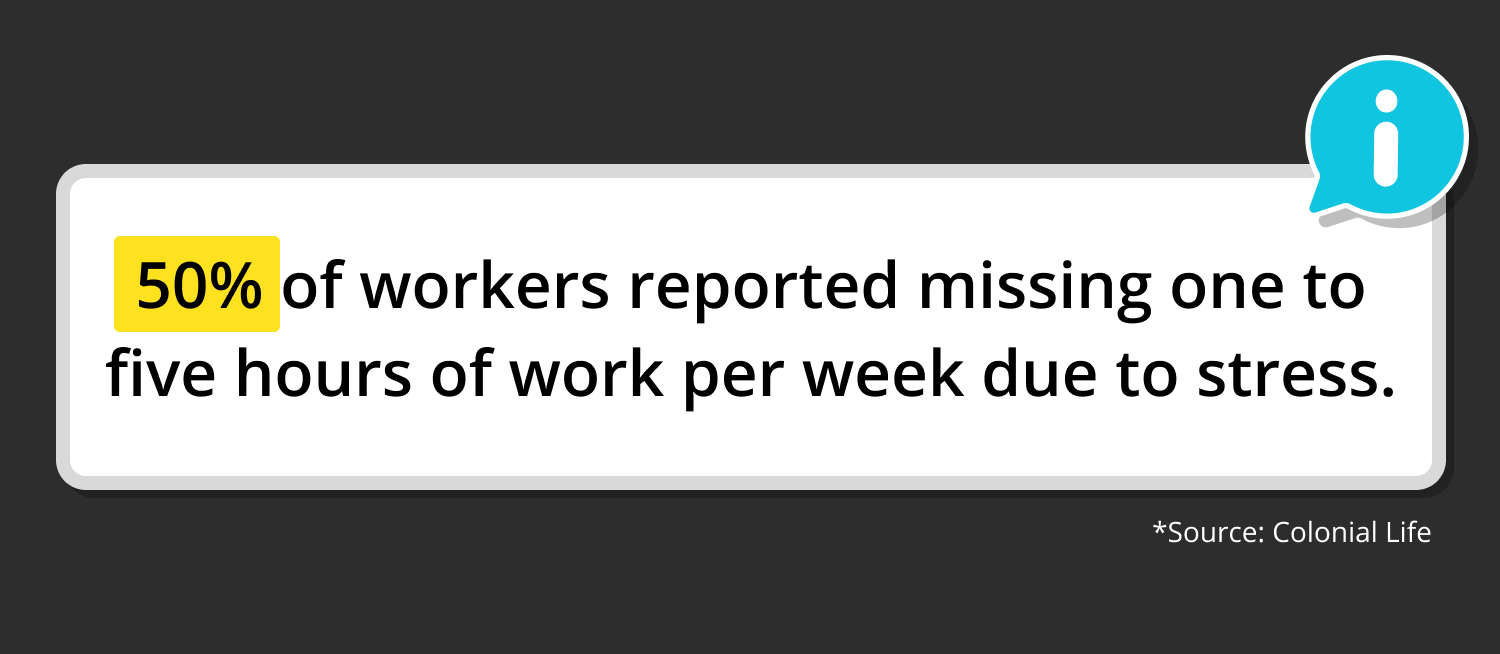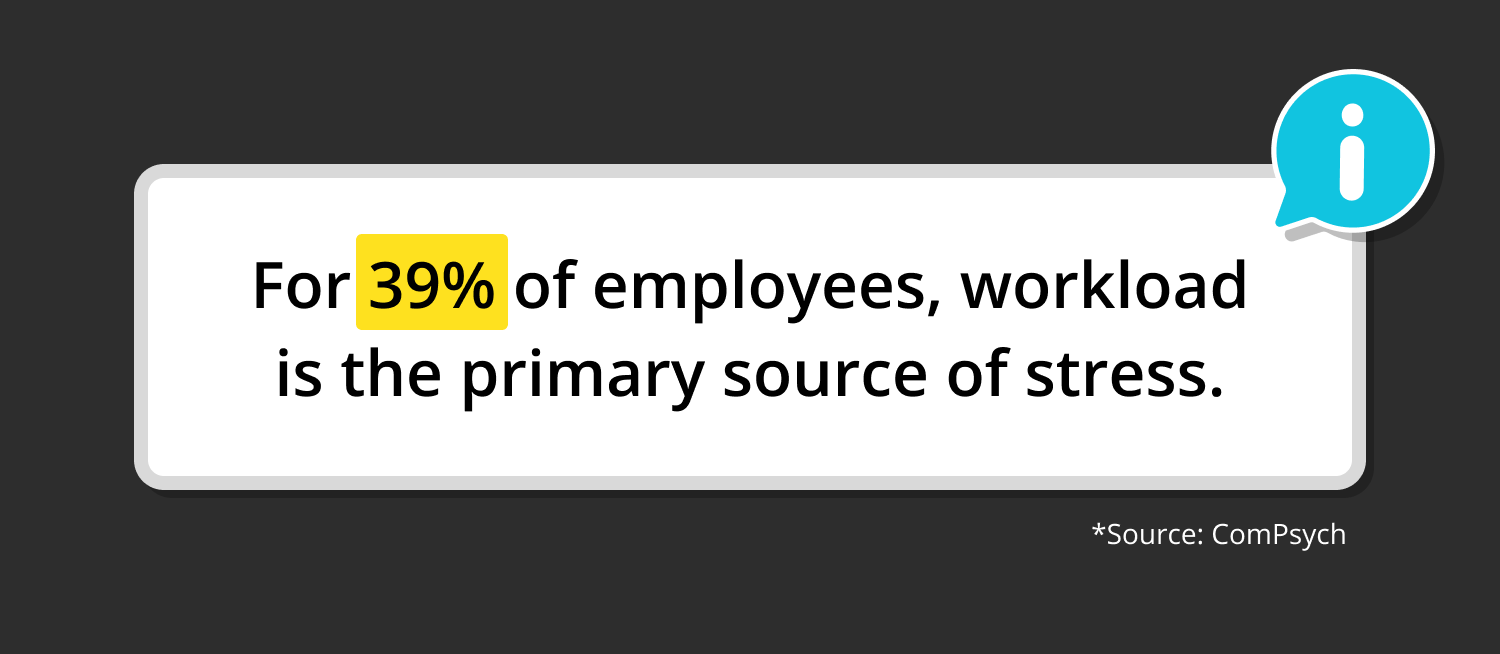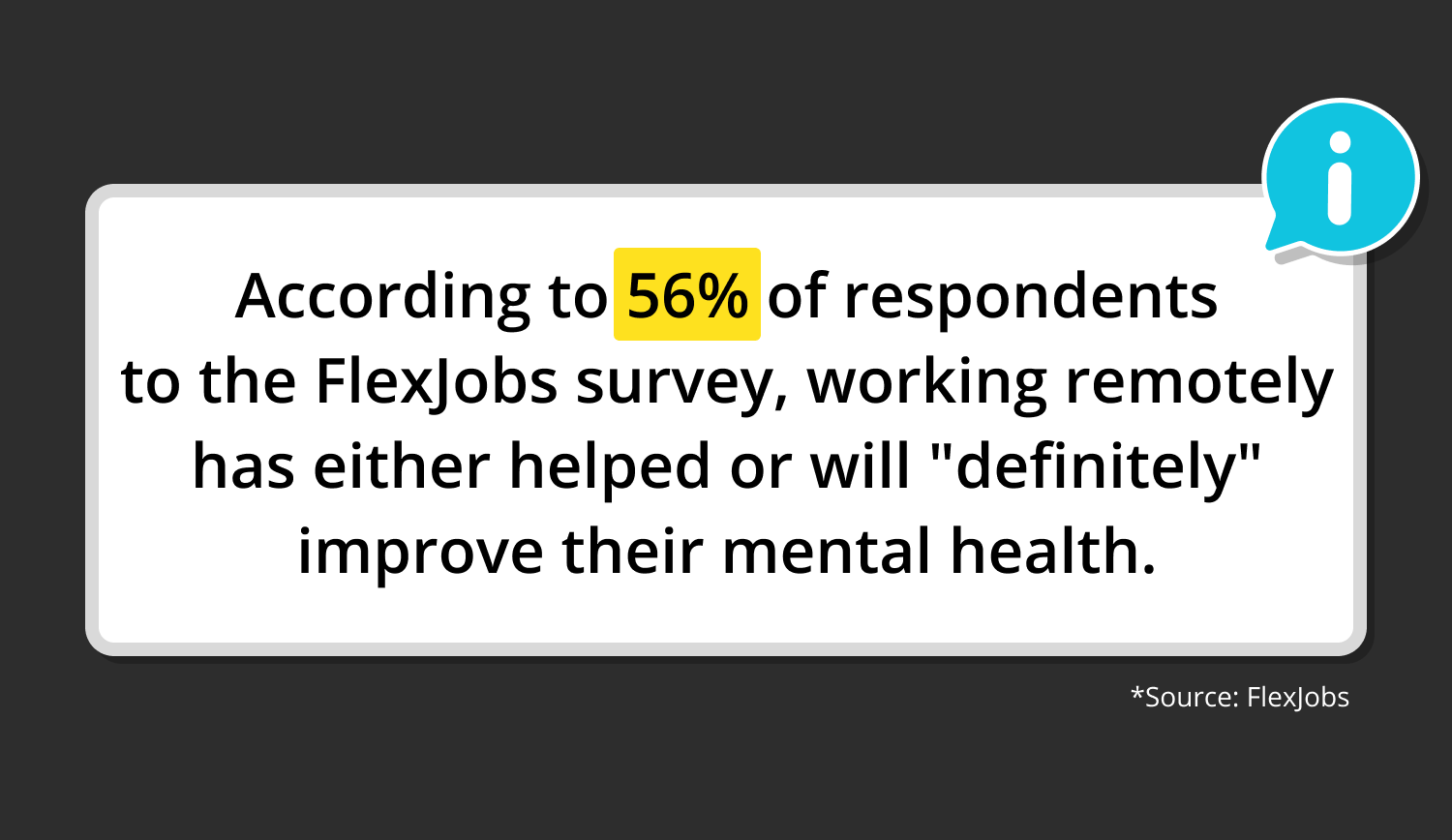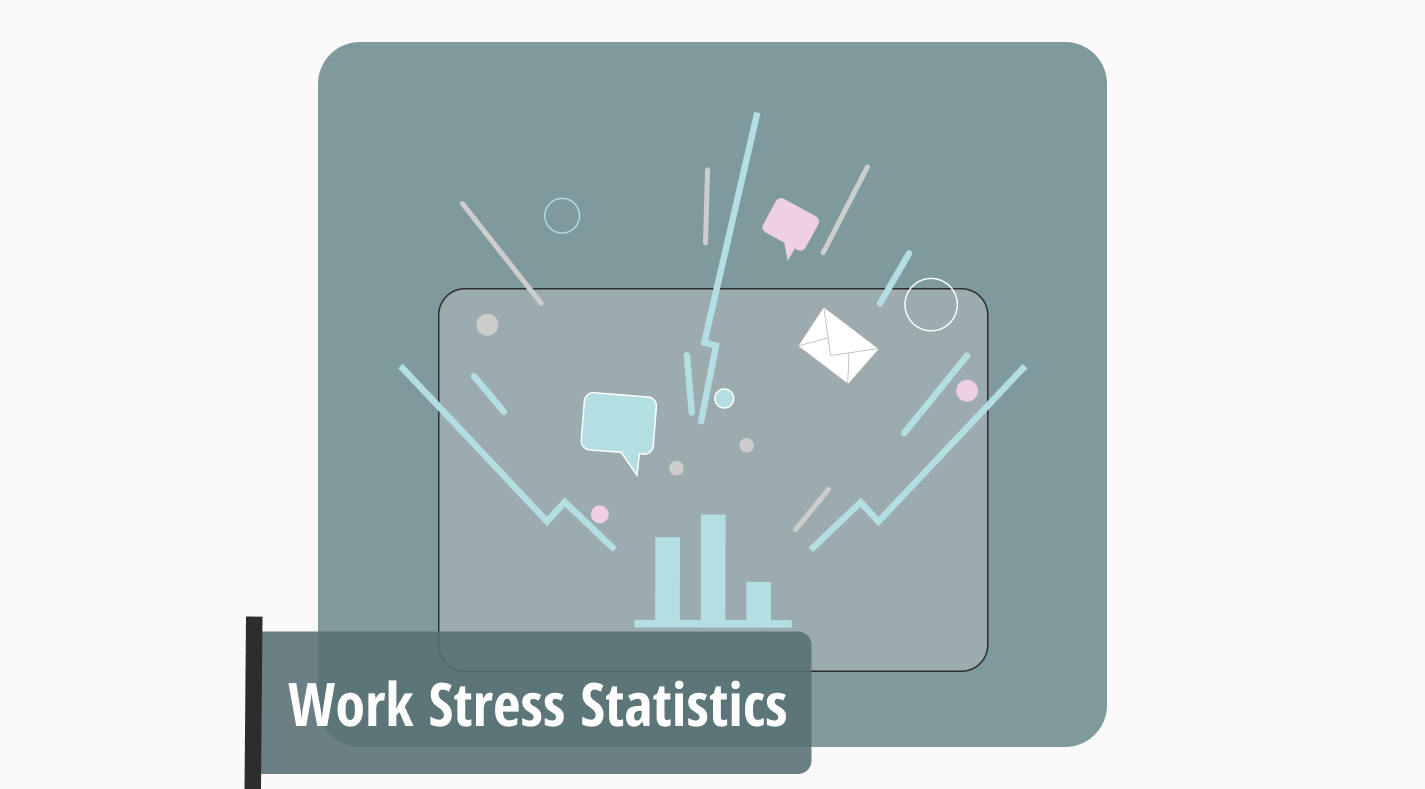Stress is part of our daily lives. It occurs spontaneously and is a reaction to anxiety caused by events that make us feel threatened. The event causing stress may or may not be real. Stress often pushes people into a fight-or-flight response, reduces job satisfaction, and can be experienced at every point of daily life. It is also frequently encountered in business environments.
Workplace stress can affect employees' physical and mental health. It also reduces work efficiency and causes a loss of motivation. Some measures that employers can take can prevent work stress and contribute to employee satisfaction. We have compiled 50+ work stress statistics so that you can make inferences for your company and find ways to decrease work stress.
What might cause stress at work?
Work stress emotionally strains employees and can lead to severe mental illness. There are also physical effects of stress, including shortness of breath and heart disease. To make the work environment more stress-free for their employees, employers should first recognize the causes of stress. Some of the factors that can lead to work stress can be listed as follows:
❗Long working hours
❗Time pressure
❗Lack of support
❗Miscommunication and poor relationships
❗Heavy workloads
❗Low motivation
❗Unstable work-life balance
50+ Work stress statistics that will make you think twice
Work stress also has negative effects on companies, such as job loss and low productivity. The 50+ work stress statistics we have prepared for you will enable you to provide a stress-free environment for your employees. It will help you review your approach to your employees and show you how you should communicate. Now take a look at the stress health statistics:
General statistics about work stress
General statistics about work stress will teach you the highlights of the topic without going into detail. You will get a general perspective on the subject before examining the statistics we have categorized. Now let's move on to general work stress statistics that will give you insight:
1. 50% of workers reported missing one to five hours of work per week due to stress (Colonial Life).
2. 42% of the Seventh Annual Labor Day Survey participants claim that high levels of stress about their jobs affect their personal relationships in the long term (The American Institute of Stress).
3. Compared to other age groups, American workers 65 and older are more likely to indicate that nothing about their jobs stresses them out, with 38% (GlobalNewswire).
4. When dealing with circumstances that increase their stress levels, 85% of employees think about how they have handled similar situations before, 84% remind themselves that they can succeed in their current circumstances, and 83% find a friend to talk to (Gallup).
5. 75% of American workers reported at least a moderate degree of stress in 2023, and over half claimed to have experienced burnout (TravelPerk).
6. 72% of those who experience everyday stress and anxiety report that it at least somewhat interferes with their lives (ADAA).
7. Stress at work costs US companies up to 300 billion dollars a year (The American Institute of Stress).
8. Almost twice as many women as men (18% to 10%) believe that their low salary is the most stressful part of their jobs (GlobalNewswire).
9. Employees who report burnout at work as happening frequently or always have a 63% greater possibility of taking a sick day because they can’t manage the effects of stress (Gallup).
10. Over twenty percent of employees think about their stressors and concerns for more than five hours each week while they are at work (Colonial Life).
11. A decade-long trend continued in 2022, as 44% of workers worldwide reported experiencing high levels of job stress throughout their workdays, matching the record high from 2021 (TravelPerk).
12. According to a survey, 46% of employees arrive at work one to four days a year when they are too stressed to work effectively (ComPsych).
13. 53% of respondents stated that their work-related obligations, particularly dealing with problems and achieving deadlines, trigger their anxiety symptoms (ADAA).

Source: Colonial Life
Work-related stress statistics
Work-related stress can lead to anxiety and depression in employees. Employers who care about the physical and mental health of their employees should try to provide them with a more peaceful working environment. Here are some eye-opening work-related stress statistics:
14. Employees with high-stress levels report higher healthcare costs by over 50% (Niosh).
15. For 39% of employees, workload is the primary source of stress (ComPsych).
16. 35% of employees claim that their jobs are negatively impacting their mental or physical well-being (The American Institute of Stress).
17. Insufficient salary was a major source of stress for 14% of the employees, with 14% stating this as their worst work-related stressor (GlobalNewswire).
18. Employees who reported feeling stressed frequently or always at work were 23% more likely to visit the emergency room and had a 2.6 times higher chance of actively looking for another job (Gallup).
19. Mid-level earners reported a significant burnout rate, with 44% falling into the $30,000–$60,000 range. Of those making 100,000 $ and more, 38% had the lowest rate of burnout (TravelPerk).
20. 83% of American workers experience stress at work, which negatively affects their work performance (GlobeNewswire).
21. Around a million workers miss work daily due to stress (The American Institute of Stress).
22. Workers who receive mental health care from their employers report a 71% reduction in burnout and are five times more likely to provide better service to their organizations (Gallup).
23. Over two-thirds of employees (67%) think work-related stress and depression has worsened since the pandemic (Indeed).
24. 41% of the workers lost productivity because of work stress, and 33% stated it decreased their level of engagement (Colonial Life).
25. 30% of people who experience stress at work have used prescription drugs to treat their anxiety, tension, mental issues, or sleep deprivation (ADAA).
💡If you want to read more statistics, check out our employee feedback statistics and get insights.

Source: ComPsych
Workplace stress statistics
In workplaces where healthy and effective communication is established, the amount of stress employees experience decreases, and productivity increases. Workplace stress statistics can help you reduce stress and increase productivity at work. To learn more, check out these workplace stress statistics:
26. According to the Gallup survey, the number of employees feeling stressed at work increased by 11% from 2014 to 2022 (Gallup).
27. Nearly half of the ADAA survey participants said that job stress negatively affects their interactions with coworkers, mostly by making them avoid social situations (73%), lose their temper (53%), and stop attending meetings (43%) (ADAA).
28. Half of the Seventh Annual Labor Day Survey participants report that their workloads are more demanding than last year (The American Institute of Stress).
29. 15% of Colonial Life survey participants said they were searching for a new job due to stress (Colonial Life).
30. In contrast to 21% of workers in older generations, 28% of millennials reported experiencing frequent or continual burnout at work in a recent Gallup research of nearly 7,500 full-time U.S. employees (Gallup).
31. Each year, stress at work leads to 190 billion dollars in medical expenses and 120,000 deaths (The American Institute of Stress).
32. Unreasonable workload was identified as the biggest reason for feeling overwhelmingly among men in the GlobalNewswire study (14%), followed by annoying coworkers with 12% (GlobalNewswire).
33. Only 24% of employees strongly feel that their company is concerned about their well-being (Gallup).
34. According to 76% of remote workers, workplace stress negatively impacts their mental health (Zippia).
35. 40% of workers report that they haven't discussed their stress at work with their employer (ADAA).
36. In a Colonial Life study, 14% of respondents claimed that work-related stress caused them to miss more work (Colonial Life).
37. 59% of survey participants report that they cannot manage stress, especially at high levels, with extreme fatigue or feeling out of control at the workplace (ComPsych).
💡If you are curious about job interview statistics, check out our article for more information!
Working from home stress statistics
The popularization of working from home has brought with it some challenges. The inability to balance work and life and lack of discipline are among the factors that increase the stress levels of teleworkers. Read the working-from-home stress statistics to learn more about the relationship between stress and working from home:
38. According to the Gallup poll, 44% of employees worldwide experienced stress the day before work (Gallup).
39. 51% of remote employees believe their company does not provide enough support to deal with burnout (Zippia).
40. The majority of FlexJobs survey respondents (96%) said that their physical and mental health would be best supported by a remote or hybrid work model (FlexJobs).
41. Compared to those working on-site (28%), remote workers are more likely to report that their stress levels have gotten worse during the pandemic (38%) (Indeed).
42. Commuting is a major source of stress for most employees. 87% of employees said it affects their stress levels (FlexJobs).
43. Another factor contributing to stress is a lack of paid time off (PTO). 30% of employees who work on-site cite this as their primary cause, compared to 20% of remote employees (Indeed).
44. According to a June 2020 survey, 51.4% of respondents who telecommuted during the coronavirus pandemic reported feeling more stressed out as a result. Nevertheless, 27% of respondents claimed that working from home did not affect their stress levels (Statista).
45. According to 56% of respondents to the FlexJobs survey, working remotely has either helped or will "definitely" improve their mental health (FlexJobs).
46. Digital communication technologies are responsible for increasing burnout, according to 69% of remote workers (Forbes Advisor).
47. According to Indeed's survey, 27% of remote workers found it difficult to disconnect from work and achieve a work-life balance due to a lack of time or a lack of a distinct separation between work and home (Indeed).
48. 67% of remote employees say they feel pressured to remain available all the time (Zippia).
49. The impact of engagement on employee stress is 3.8 times greater than that of work location (Gallup).
50. 41% of employees who work remotely report feeling stressed either always or most of the time (Zippia).

Source: FlexJobs
What can you do to decrease stress in the workplace?
Reducing stress in the workplace has many benefits for both employees and companies. It improves employees' quality of life and physical and mental health. It is only possible in a stress-free environment to create a positive atmosphere in the workplace and for employees to enjoy their work.
A stress-free working environment is also essential for companies to use their workforce more efficiently and ensure customer satisfaction. For these reasons, providing a peaceful working environment for employees is vital for employers. The following measures can be taken for a stress-free working environment:
🧘Adopte flexible working hours
🧘Utilize the remote working system
🧘Provide emotional support to employees
🧘Communicate positively and effectively
🧘Pay attention to proper time management
🧘Assist employees in achieving a work-life balance
Final words
Work stress affects the daily lives of many employees and reduces their quality of life. Many factors, such as long working hours and lack of support, can cause it. Job stress negatively affects companies as much as it affects employees. Employers can prevent work stress by taking measures and providing a peaceful working environment for their employees.
In this article, we have compiled 50+ work stress statistics to help you better understand the subject. Thanks to our categorized statistics, you can examine the subject in depth and learn it to the finest detail. You can also see the factors that cause work stress and what you can do to reduce stress at work.
Now you know everything you need to know about work stress and are ready to implement it in your company!
Fatih is a content writer at forms.app. He is also a translator and interpreter. Fatih loves reading and writing. He is passionate about exercising and traveling. His specialties are surveys, statistics, and translation.


